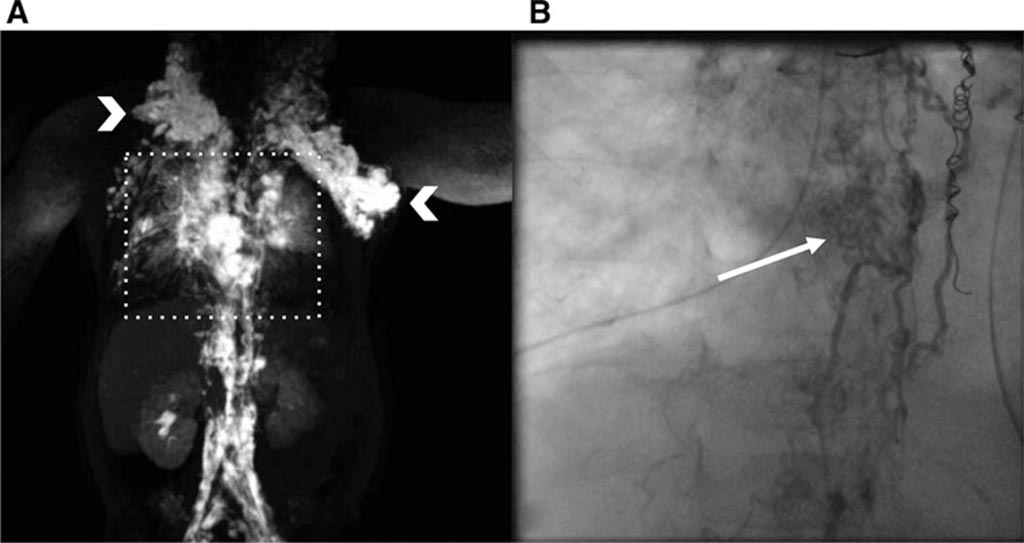Advanced Imaging Aids Treatment of Lymphatic Plastic Bronchitis
By MedImaging International staff writers
Posted on 25 Jan 2017
A new study describes how lymphatic imaging can help surgeons perform percutaneous embolization to remove the branching casts that form in the airways of plastic bronchitis patients.Posted on 25 Jan 2017
Researchers at the Children's Hospital of Philadelphia (CHOP) and the University of Cincinnati used dynamic contrast-enhanced MR lymphangiography (DCMRL) and intranodal lymphangiography to investigate the mechanism of cast formation in seven adults patients (mean age 50 years) with plastic bronchitis, and to evaluate the therapeutic outcome of percutaneous lymphatic embolization for these patients, which involved inserting a combination of glue and coils through catheters to halt the abnormal flow of lymphatic fluid.

Image: DCMRL (A) and lymphangiogram (B) images of the central lymphatic system of a plastic bronchitis patient (Photo courtesy of Maxim Itkin).
The researchers found that DCMRL established the presence of abnormal pulmonary lymphatic flow in six of the patients, which was confirmed by intranodal lymphangiography and thoracic duct injection that demonstrated lymphatic reflux, a communication of abnormal lymphatic channels with airways. The researchers then treated six of the seven with lymphatic embolization, using a combination of endovascular glue and coils.
After lymphatic embolization, five of the patients reported immediate and complete resolution of symptoms, and the sixth patient reported significant partial improvement. Four patients had transient abdominal discomfort, which was treated with analgesics and resolved before discharge in all subjects. The average follow-up period was 11 months after initial treatment. The study was published in the October 2016 issue of Annals of the American Thoracic Society.
“Based on these data, we postulate that many cases of idiopathic plastic bronchitis in adults have a lymphatic basis, and propose that the diagnosis be renamed ‘lymphatic plastic bronchitis’ in those subjects, to distinguish the disorder from the other forms,” concluded lead author radiologist Maxim Itkin, MD, of CHOP. “Percutaneous transabdominal catheterization and embolization of the pulmonary lymphatics is a safe and effective treatment for the acute manifestation of this disorder, but additional studies are needed to determine the long-term safety and durability of this approach.”
Plastic bronchitis is a condition characterized by expectoration of branching bronchial casts. Although the mechanism of cast formation in adults with plastic bronchitis remains poorly understood, abnormal pulmonary lymphatic flow resulting in molding of congealing lymphatic fluids in the airway can cause life-threatening respiratory distress, especially in children. In adults, the condition may go undiagnosed for years in patients who may initially be diagnosed with asthma or chronic cough.














